Chateau de Versailles
Castles & Palaces in Paris, France
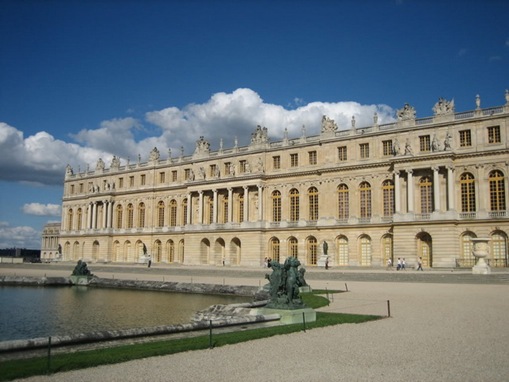 Famous for its gardens and fountains, its magnificent Hall of Mirrors, and above all for the man who built it (and eventually 'did for' the French Monarchy) - the Sun King Louis X1V. From 1682, when it was completed in grand baroque style, until the Revolution in 1789, it was the principal residence of the French Kings. The fact that the King had his court pay homage to him so far out of Paris, far from the 'hoi polloi', in no small part led to the monarchy's alienation from the French people - as well as the sheer extravagance of the place.
Famous for its gardens and fountains, its magnificent Hall of Mirrors, and above all for the man who built it (and eventually 'did for' the French Monarchy) - the Sun King Louis X1V. From 1682, when it was completed in grand baroque style, until the Revolution in 1789, it was the principal residence of the French Kings. The fact that the King had his court pay homage to him so far out of Paris, far from the 'hoi polloi', in no small part led to the monarchy's alienation from the French people - as well as the sheer extravagance of the place.
It is now one of Paris's premier tourist destinations, a 30 minute ride south by car. A nightmare to visit in high summer, when you have to queue for hours with the coach tours, and then shuffle around amongst the crowd, it's best seen off season and very early in the day - though Paris is a year round destination. As soon as the crowds arrive, duck out into the magnificent gardens, a worthwhile attraction in their own right.
Alcazar
Castles & Palaces in Segovia, Spain
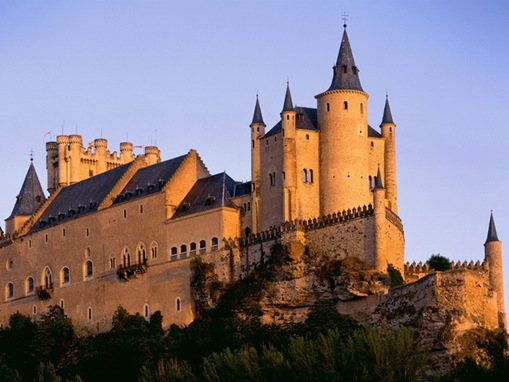 The Alcazar in Segovia is perched on top of a rock looking out over the rivers Eresma and Clamores. The earliest records of the castle go back to the 12th century, though the Romans may well have hit upon a similar idea to Alfonso VIII and used the high outpost as a military base. Dominated by the great western tower, the castle was used as a state prison, before becoming home to the Royal School of Artillery in 1762 and, more recently, Spanish Military Archives and a state museum.
The Alcazar in Segovia is perched on top of a rock looking out over the rivers Eresma and Clamores. The earliest records of the castle go back to the 12th century, though the Romans may well have hit upon a similar idea to Alfonso VIII and used the high outpost as a military base. Dominated by the great western tower, the castle was used as a state prison, before becoming home to the Royal School of Artillery in 1762 and, more recently, Spanish Military Archives and a state museum.
Alhambra
Castles & Palaces in Granada, Spain
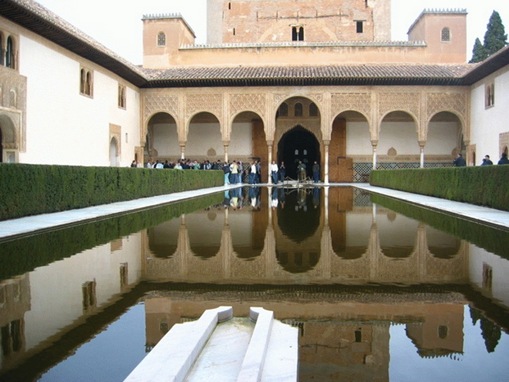 The calm tinkle of water is the overriding first impression of the Alhambra palace. Built in a particularly arid spot, it is none the less a veritable park of water features; fountains run into ponds into little man made streams and channels into larger pools. The second thing you will probably notice about the Alhambra is the way, as the water features are like art, the rest of the details of the palace are as well: think intricate woodwork, careful mosaics and ceramics and complex calligraphy and designs rendered in plaster and tile.
The calm tinkle of water is the overriding first impression of the Alhambra palace. Built in a particularly arid spot, it is none the less a veritable park of water features; fountains run into ponds into little man made streams and channels into larger pools. The second thing you will probably notice about the Alhambra is the way, as the water features are like art, the rest of the details of the palace are as well: think intricate woodwork, careful mosaics and ceramics and complex calligraphy and designs rendered in plaster and tile.
One particularly impressive room has a roof of inlaid cedar wood panelling made up of 8,000 pieces of jigsaw. Further back in the kings private quarters are themed rooms, many with indoor pools and channels.
The Alhambra is the world’s most carefully kept Muslim palace and dates originally from the 13th and 14th centuries. Originally built as a fortress in red stone, only parts of the original Alhambra remain, much was redone in the new ‘pleasure palace’. The surrounding wall looks fairly weak and is more to offer the harem girls nice views than to defend the kings of Granada. The Alhambra is now said to be one of the greatest examples of Islamic architecture.
The Summer Palace
Castles & Palaces in Beijing, China
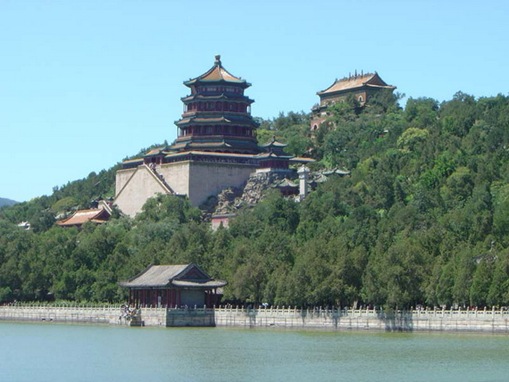 Three thousand structures make up the Summer Palace which is like a vast museum to traditional Chinese art, architecture and gardening. Pavilions, bridges, towers, statues and corridors are included in this figure as well as shrines and larger buildings. The whole environment is carefully designed as a showcase for the intricate beauty of Chinese arts to compliment the equally revered natural environment.
Three thousand structures make up the Summer Palace which is like a vast museum to traditional Chinese art, architecture and gardening. Pavilions, bridges, towers, statues and corridors are included in this figure as well as shrines and larger buildings. The whole environment is carefully designed as a showcase for the intricate beauty of Chinese arts to compliment the equally revered natural environment.
A huge, two storey boat made of elaborately carved marble is understandably one of the main attractions, another is the Long Corridor, a richly covered decorated walkway running 730 metres and incorporating over 14,000 individual paintings depicting traditional scenes, great architecture, myths and heros.
The grand palace buildings are set on man made features Longevity Hill, topped by Duobao Pagoda and Kunming Lake which shape the layout of the rest of the compound. The hill was built with the soil from the lake which covers three quarters of the compound.
Most of the main structures are on the front of the hill above the lake, creating a crowded layout of competing grandeur which is just the right side of too busy. The back of the hill is designed with reflection in mind and is more like an incredibly opulent and well planned garden.
This setting was first used in the Jin Dynasty (1115-1234) for a garden, the Garden of Clear Ripples, which was much appreciated and replicated, then gradually built upon to become the Summer Palace. Long Corridor was part of the original construction and runs along the lake shore at the foot of the mountain - it was built to protect the emperor’s mother from the elements on her walks thorough the garden. South of the Long Corridor is the 17 Arch Bridge engraved with 500 lions.
Schloss Neuschwanstein
Castles & Palaces in Bavaria, Germany
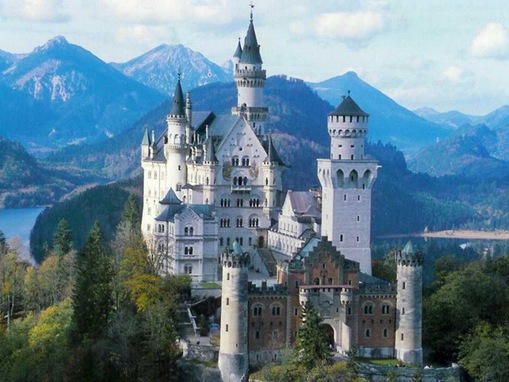 Neuschwanstein is not a thousand year old castle build for defense like most other castles, but the dream castle of a Bavarian King in the 19th century. In 1869, King Ludwig II began to build this castle in the sky. The castle is set high in the Bavarian Alps on the site of the ancient ruins of two castles, Vorder and Hinterhohenschangau. Its snow white walls and tall towers are the very image of a fairytale castle befitting a King. It is built in the style of the late Romanesque castles of the Hohenstaufen dynasty as interpreted by King Ludwig II. The construction of Schloss Neuschwanstein was never completed. A castle keep was to be built in the main courtyard that would have towered above the existing structures in true fairytale style, but the tower was never built. Only 14 rooms inside the castle were completed. The King spent lavishly on Neuschwanstein and was also building two other castles at that time, the Linderhof and Herrenchiemsee. The Linderhof was the only one to be completed. Plans for a fourth castle, Falkenstein, were also being designed. The royal family was distressed by the amount of money that Ludwig was spending on his dream castles. So they developed evidence to have the King declared instable and unfit to rule due to mental illness and had him taken away to Berg Castle in June of 1886. The next day the King went on a walk with his doctor. A few hours later both their bodies were found drown in Lake Starnberg. All construction on Ludwig’s castles stopped after his death. It was ruled suicide, although some say he was murdered. It remains a mystery to this day. A few weeks after his death, Neuschwanstein was opened to the public. The completed rooms can be visited via a guided tour and showcase tales of Parsifal and other epic sagas. Today, Schloss Neuschwanstein is Germany’s most photographed building and most visited castle.
Neuschwanstein is not a thousand year old castle build for defense like most other castles, but the dream castle of a Bavarian King in the 19th century. In 1869, King Ludwig II began to build this castle in the sky. The castle is set high in the Bavarian Alps on the site of the ancient ruins of two castles, Vorder and Hinterhohenschangau. Its snow white walls and tall towers are the very image of a fairytale castle befitting a King. It is built in the style of the late Romanesque castles of the Hohenstaufen dynasty as interpreted by King Ludwig II. The construction of Schloss Neuschwanstein was never completed. A castle keep was to be built in the main courtyard that would have towered above the existing structures in true fairytale style, but the tower was never built. Only 14 rooms inside the castle were completed. The King spent lavishly on Neuschwanstein and was also building two other castles at that time, the Linderhof and Herrenchiemsee. The Linderhof was the only one to be completed. Plans for a fourth castle, Falkenstein, were also being designed. The royal family was distressed by the amount of money that Ludwig was spending on his dream castles. So they developed evidence to have the King declared instable and unfit to rule due to mental illness and had him taken away to Berg Castle in June of 1886. The next day the King went on a walk with his doctor. A few hours later both their bodies were found drown in Lake Starnberg. All construction on Ludwig’s castles stopped after his death. It was ruled suicide, although some say he was murdered. It remains a mystery to this day. A few weeks after his death, Neuschwanstein was opened to the public. The completed rooms can be visited via a guided tour and showcase tales of Parsifal and other epic sagas. Today, Schloss Neuschwanstein is Germany’s most photographed building and most visited castle.
Schloss Schonbrunn
Castles & Palaces in Vienna, Austria
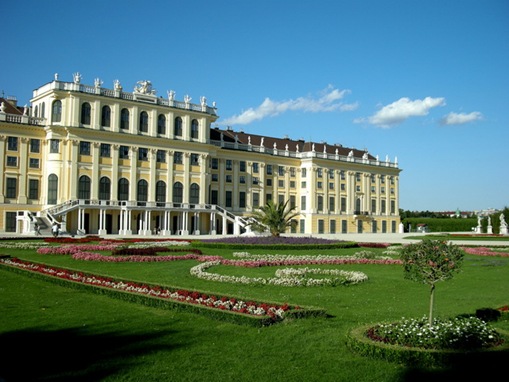 This is one of Vienna’s best known attractions, but despite it’s popularity and many tourists, visitors are still provided with an excellent insight of imperial life in baroque period Vienna. Schonbrunn has been imperial home and the seat of generations of Habsburgs (since 1569) so exquisite art and objects from some of Europe’s best artists and craftsmen from different periods litter the various wings. Important rooms in the palace are too numerous to mention, but make sure you visit the Blue Chinese Salon, redecorated in the beginning of the 19th Century to reflect the growing popularity in Europe of Eastern art and style, which is where Karl I gave up Austrian rule and the democracy of Austria was born, the Marie Antoinette Room which was the family dining room, used on less formal occasions during Franz Joseph’s period, but reflecting the opulence the family enjoyed when dining even on more simple dishes and the Millions Room, inlaid with sixty rosewood rococo miniatures depicting the life of Indian royalty, and decorated with an incredibly unique bronze and enamel chandelier and a bust of Marie Antoinette who grew up here before been sent to France to marry. The salons are also unmissable providing important art and portraiture of the dynasty. The family contributed much of their own skill and taste to the palace, this is reflected especially in the Porcelain Room the walls of which are covered in framed blue inked drawings by Emperor Franz Stephan and his children which give the room a willow patterned appearance, hence the name. There is truly too much of this place worthy of gushing description, however a concise website will help you to plan your trip in advance so as not to miss your personal highlights.
This is one of Vienna’s best known attractions, but despite it’s popularity and many tourists, visitors are still provided with an excellent insight of imperial life in baroque period Vienna. Schonbrunn has been imperial home and the seat of generations of Habsburgs (since 1569) so exquisite art and objects from some of Europe’s best artists and craftsmen from different periods litter the various wings. Important rooms in the palace are too numerous to mention, but make sure you visit the Blue Chinese Salon, redecorated in the beginning of the 19th Century to reflect the growing popularity in Europe of Eastern art and style, which is where Karl I gave up Austrian rule and the democracy of Austria was born, the Marie Antoinette Room which was the family dining room, used on less formal occasions during Franz Joseph’s period, but reflecting the opulence the family enjoyed when dining even on more simple dishes and the Millions Room, inlaid with sixty rosewood rococo miniatures depicting the life of Indian royalty, and decorated with an incredibly unique bronze and enamel chandelier and a bust of Marie Antoinette who grew up here before been sent to France to marry. The salons are also unmissable providing important art and portraiture of the dynasty. The family contributed much of their own skill and taste to the palace, this is reflected especially in the Porcelain Room the walls of which are covered in framed blue inked drawings by Emperor Franz Stephan and his children which give the room a willow patterned appearance, hence the name. There is truly too much of this place worthy of gushing description, however a concise website will help you to plan your trip in advance so as not to miss your personal highlights.
The castle, formal gardens, auxiliary buildings and zoo are the largest, most complete complex of this kind.
Prague Castle
Castles & Palaces in Prague, Czech Republic
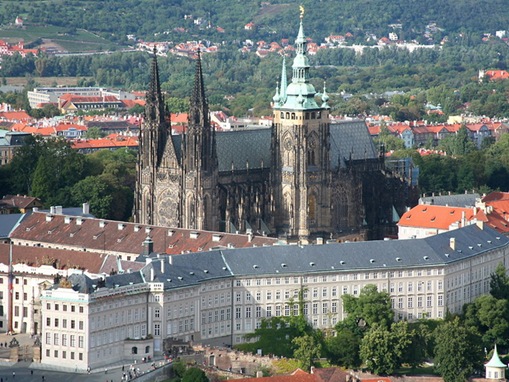 Prague is Europe's largest Medieval castle, with a progression of invaders and regimes adding their own appendages, creating a rich complex of palaces, cathedrals and churches in the shadow of the main fortress' walls. It's political and democratic importance remains, with the castle now the official of the President of the Czech Republic.
Prague is Europe's largest Medieval castle, with a progression of invaders and regimes adding their own appendages, creating a rich complex of palaces, cathedrals and churches in the shadow of the main fortress' walls. It's political and democratic importance remains, with the castle now the official of the President of the Czech Republic.
Forbidden City
Castles & Palaces in Beijing, China
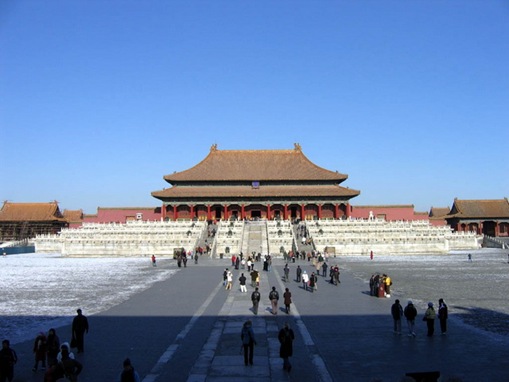 An entire mysterious city of narrow high walled alley ways leading onto courtyards with single storey, well decorated temple-esque buildings, the West and East palace compounds are just as interesting as the much photographed main gates and temples which run in a direct line on a south to north axis from the huge Mao painting at the Meridian Gate to the Gate of Divine Prowess. These were the living quarters of the royal family and concubines, and where a lot of the intrigue took place, remember, as well as all the important business of business, running the country and praying, the Forbidden City was also a community and as with any community, especially one where a lot of power is concerned there was more drama than your average soap opera going on, and historic personal drama is fascinating stuff.
An entire mysterious city of narrow high walled alley ways leading onto courtyards with single storey, well decorated temple-esque buildings, the West and East palace compounds are just as interesting as the much photographed main gates and temples which run in a direct line on a south to north axis from the huge Mao painting at the Meridian Gate to the Gate of Divine Prowess. These were the living quarters of the royal family and concubines, and where a lot of the intrigue took place, remember, as well as all the important business of business, running the country and praying, the Forbidden City was also a community and as with any community, especially one where a lot of power is concerned there was more drama than your average soap opera going on, and historic personal drama is fascinating stuff.
My first recommendation is get an audio guide. For only 40RMB (2008) on top of the entry ticket at 60RMB, you get to hear a lot more about the people who lived in the city. I've seen 'The Last Emperor' so I had an idea about the end of the story, but each generation had its own intrigues. The men vied for power but the women were at it as well, and in an even more formal way – the concubines had a defined heirachy and were recruited every four years then competed for favour with the emperor, and were promoted and demoted at his will. They weren't really mistresses but almost part of the family and had court duties to perform as well as walking around looking lovely, saying clever things and generally keeping everyone happy. I found their stories the most touching, they were all having children by the same man, yet had to constantly compete on their children's behalf – a lot of their stories seemed to end with them crying with grief until they went blind. Concubines could easily have their children taken away and be banished to the cold, dark north eastern corner if they fell out of favour where they could pretty much languish in boredom by the sounds of it, possibly within hearing distance of their children's laughter.
Only a few of these buildings are open and those that are have been converted into museum and exhibition space. I got the impression that the upkeep of the Forbidden City is a big job and some sections looked in dire need of a little TLC, but it was a shame to gut the inside of these buildings. Some of the ones on the western side are presented behind glass, you can't go in but some of the original furniture and decorations have been feng shui -ed in the rooms. The crowds seemed to be fascinated with the Emperor's official bridal bed and the rooms he and his new wife would have shared for the first three months of their marriage, but if felt kinda voyeristic to crowd round the windows and with no inside lighting everyone had their faces pressed in ungainly ways against the glass.
Only a small section of the garden, a bit with lots of ornamental, strangely shaped rocks, is open to the public, and it swarmed with tour groups, hanging around the gift shops and tea houses where they'll serve your tea in paper cups. The inside of the Pavilion of the Crimson Snow, for which Emperor Qian long poeticised:
'Where are the trees that grow more luxuriant and earlier than the others in spring?
They are those near the Pavilion of the Crimson Snow in front of the Hill of Accumulated Elegance.”
Has been made into a gift shop, and the crab apple trees responsible for the leaves like red snow have long died, but there is still a graceful rock by it inscribed with some of the poetry that Emperors wrote inside the pavilion.
I've mentioned the East and West palaces first but the main thoroughfare through the Forbidden City is from the Meridian Gate where you'll get those famous views of all the temples lining up behind each other and rising into the distance. The gates and temples all have wonderful names, the Gate of Supreme Harmony is before the Temple of Supreme Harmony, the Hall of Central Harmony and the Hall of Preserving Harmony, which are all the official bits before you get to the residential bits starting with the Gate of Heavenly Unity, the Hall of Imperial Peace and Gate of Loyal Obedience. Each of these building is decorated along similar lines, very grand and golden-dragon and it's the overall impression which makes them so impressive. Individually they hold their own against Beijing's other temples but the way they're linked by carved marble bridges and wide courtyards really bring home the unique purpose these buildings served for so long in housing god's representative on earth.
The most impressive thing has to be the history and there isn't enough information about life in the city, in fact without the audio guide I would have been staring in awe at I don't know what – which a lot of people were doing. I thought visiting the Forbidden City was going to be like visiting Versailles, where people gasp quietly and reverently, but you're sharing your experience with thousands and thousands of visitors, and it's more zoo than relic down the central pathway, but quieter in the West and East Palaces where I think the tour groups don't have time to delve and you can spend more time considering what life would have been like to live in such a strange insular, luxurious prison. The labyrinth like walls made me feel sorry again for Pu'yi, the last Emperor, whose story seems a bit like a trail across all of Beijing's relics.
Definitely get an audio guide, leave plenty of time (it closes at 5 and 10 minutes before they start playing dinky music to herd you out by which sounds like the Blue Peter theme.) to see the side compounds and expect to share your visit with a lot of others and to feel slightly batted by the number of souvenir stores - but if you listen to the personal stories you can still feel something of the place.
Tower of London
Castles & Palaces in London, United Kingdom
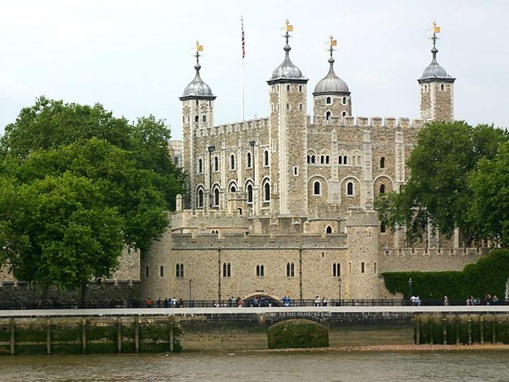 In the center of London on the north bank of the River Thames stands the Tower of London. For almost a thousand years this castle has served many functions; a defensive fortress, prison, royal palace, armory, mint, and place of execution. It has seen more than its share of English history, some of which still echoes in its towers and halls as many ghosts still call the castle home. The White Tower was constructed around 1078 and is the largest and oldest part of the castle. By 1270 an outer curtain wall encircled the White Tower and by 1300 a second curtain wall encircled the first giving the tower walls with walls for added protection. Many notables from England’s history have been imprisoned in the Tower of London including King Henry IV, Sir Walter Raleigh, Guy Fawks, and Rudolph Hess. Anne Boleyn was executed in 1536 for treason against Henry VIII. Her ghost still haunts the castle. One of the most famous stories involving the Tower of London is about the two Princes. King Edward IV died in 1483 and his two young sons Edward and Richard were kept in the Tower for their own protection by their uncle, Richard Duke of Gloucester. Preparations were made for Edward’s coronation but it was the uncle who was crowned King Richard III. The two Princes were the only obstacles that threatened Richard’s ability to keep the throne. For a time, they could be seen playing on the grounds after their father’s death, but they eventually were seen less and less until one day they disappeared altogether. It has been speculated through the years that they were murdered by Richard III. What happened to the Princes was never discovered although the skulls and bones of two young boys were found about two hundred years later under a stairwell that was being repaired in the White Tower. Today, the Tower of London houses the Crown Jewels of England and can be toured either independently or by guided tour with one of the Yeoman Warders. I recommend taking the guided tour first, then spending the rest of the day exploring the castle on your own.
In the center of London on the north bank of the River Thames stands the Tower of London. For almost a thousand years this castle has served many functions; a defensive fortress, prison, royal palace, armory, mint, and place of execution. It has seen more than its share of English history, some of which still echoes in its towers and halls as many ghosts still call the castle home. The White Tower was constructed around 1078 and is the largest and oldest part of the castle. By 1270 an outer curtain wall encircled the White Tower and by 1300 a second curtain wall encircled the first giving the tower walls with walls for added protection. Many notables from England’s history have been imprisoned in the Tower of London including King Henry IV, Sir Walter Raleigh, Guy Fawks, and Rudolph Hess. Anne Boleyn was executed in 1536 for treason against Henry VIII. Her ghost still haunts the castle. One of the most famous stories involving the Tower of London is about the two Princes. King Edward IV died in 1483 and his two young sons Edward and Richard were kept in the Tower for their own protection by their uncle, Richard Duke of Gloucester. Preparations were made for Edward’s coronation but it was the uncle who was crowned King Richard III. The two Princes were the only obstacles that threatened Richard’s ability to keep the throne. For a time, they could be seen playing on the grounds after their father’s death, but they eventually were seen less and less until one day they disappeared altogether. It has been speculated through the years that they were murdered by Richard III. What happened to the Princes was never discovered although the skulls and bones of two young boys were found about two hundred years later under a stairwell that was being repaired in the White Tower. Today, the Tower of London houses the Crown Jewels of England and can be toured either independently or by guided tour with one of the Yeoman Warders. I recommend taking the guided tour first, then spending the rest of the day exploring the castle on your own.
Chateau de Chillon
Castles & Palaces in France
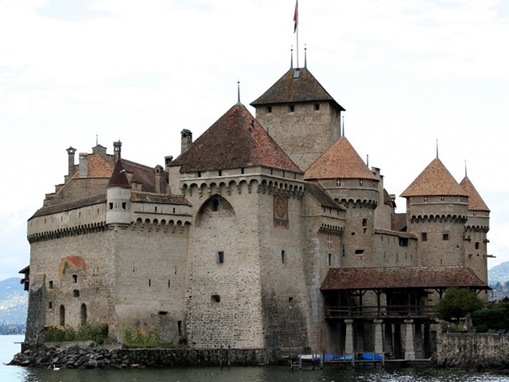 Picturesque photos of this castle are plentiful and its tall simple white walls and pointed roofs and backdrop of Swiss mountain peaks and Lake Geneva may be familiar to you.
Picturesque photos of this castle are plentiful and its tall simple white walls and pointed roofs and backdrop of Swiss mountain peaks and Lake Geneva may be familiar to you.
Built on the very edge of the lake on an island, its walls are heavily fortified on all sides save those facing over the water which are ornate with arched pillars and romantic balconies. The Counts of Savoy, who were Italian knights, lived here and kept watch over this important European trade and travel route and it became famous during the 19th century for the romantic literature it inspired in the likes of Shelly, Byron and Alexandre Dumas.
It is thought to have been built from the ground up on top of a vast dungeon complex, that has been carved into the rock of the jagged atoll and graceful pillars support the high roofs and the rest of the chateau. Above ground twenty five buildings comprise the castle, with tall towers built around three open courtyards in the medieval style. The spot on which the castle has been built has long been inhabited, but the first castle was built here around 1150 and took its current form after much extension during the 13th Century.
I highly recommend that you take a guided tour to get the greatest appreciation of the place and its history, one of the chateaus buildings has been renovated into a museum which houses the castles art treasures. It is especially nice to arrive at the castle via boat.